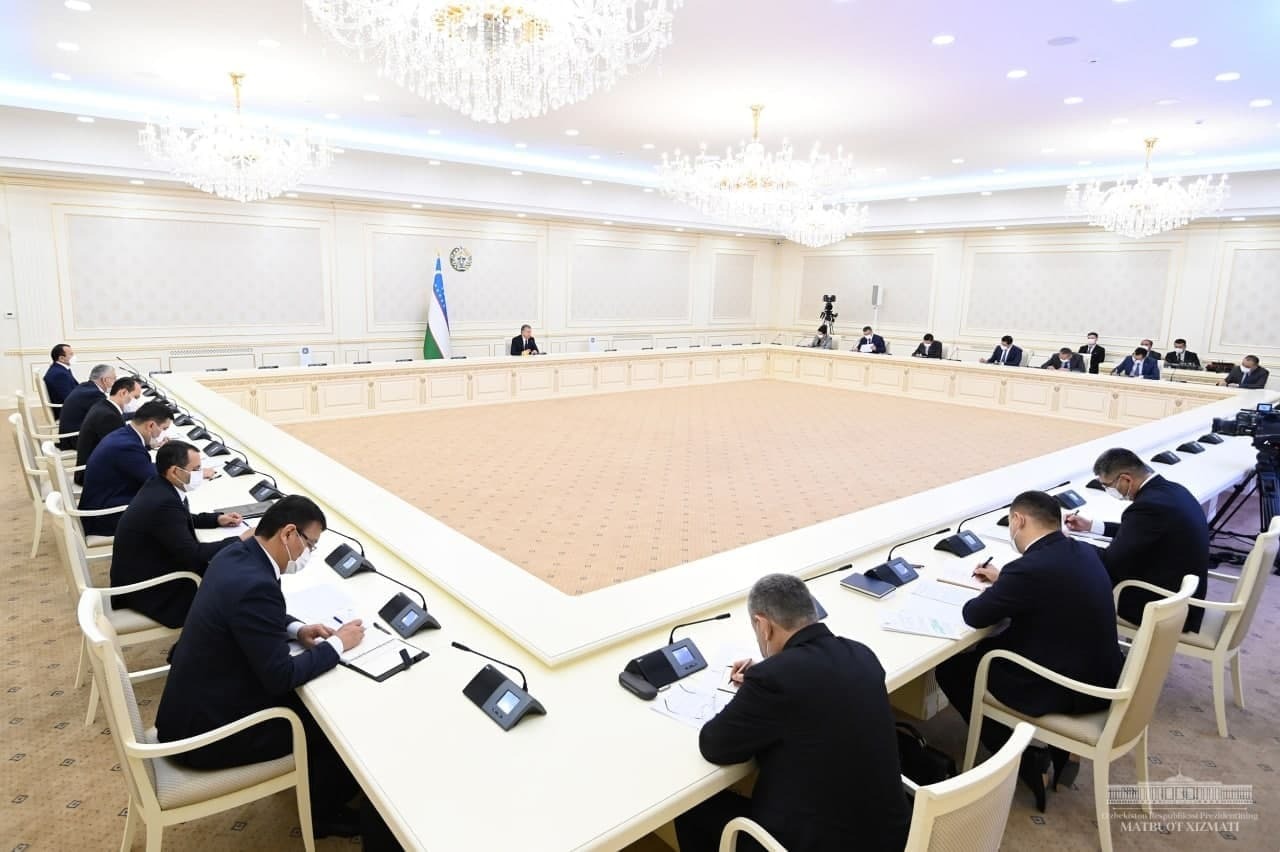Analyzing the potential of the viticulture sector and identifying large-scale measures for its development

On July 7th, chaired by President Shavkat Mirziyoyev, a video conference was held on the development of viticulture and industrial processing of grapes, as well as measures to organize wine tourism in the regions.
The head of state noted that the country's winemaking tradition has a long history and today there are great opportunities for the development of the sphere.
“Viticulture has been an integral part of agriculture for centuries, a value, pride and source of income for our people. Viticulture is inextricably linked to our lifestyle and customs. Grapes grew on every street, in every yard. Grape varieties such as "Husaini", "Toifi", "Rizamat-ota", "Kelinbarmok" and "Kishmish" were known far beyond the borders of our country", noted Shavkat Mirziyoyev.
Today grapes are grown on an area of 90,000 hectares in the country. 900 thousand people are permanently and seasonally employed in this area. In the last four years, 52,000 hectares of vineyards have been replanted, and 210 billion Sum have been allocated to the sphere in the form of subsidies. During this time, the share of grapes in the export of fruit and vegetable products doubled. At the same time, an analysis of market demand reveals enormous untapped opportunities. Grapes, in particular, are the third largest fruit on the world market in terms of sales, and demand for them is growing by an average of $ 350 million annually.
The potential of Uzbek grape exports is estimated to be at least $ 600 million, raisins to $ 500 million, and wine to $ 100 million.
Viticulture has a high economic and social impact. An average of 100 million sums is spent on growing table grapes on 1 hectare, and in 4 years it can bring a net profit of 250 million sums. Grapeseed oil also enjoys a high reputation on the world market.
Another important aspect is that 1 hectare of vineyards, especially those of the espalier type, can provide jobs for up to 10 people, produce products worth 300 million sums and export products averaging 25 thousand dollars, while 1 hectare of grain cultivation provides work for 2 people and supplies products for a maximum of 20 million sums.
These comparative facts confirm the need to pay more attention to viticulture and to solve the problematic problems in this area.
Unfortunately, in some areas, the area of large vineyards has decreased by 7,000 hectares in the last four years. There is practically no breeding work in the field; grape varieties are grown that were created 40-50 years ago. There is no incentive system for the renewal of vineyards. The science and technology of viticulture is not pursued, neither scientists nor producers are involved in the eradication of diseases. As a result, productivity drops and more and more vineyards become sick. Only 38 percent of the vineyards are intensively cultivated.
The yield of local grapes is 1.5-2 times lower than in other Asian countries. In addition, stone fruit accounts for 90 percent of the grapes grown in our country, while the demand for seedless grapes is growing worldwide. The degree of processing of the grapes also does not meet modern requirements. The share of wine in the total consumption of alcoholic beverages is only 2 percent. Wine tourism is poorly developed in the country. There are only four tourist plantations in the Samarkand, Fergana and Tashkent regions.
In this context, the meeting discussed issues related to the broad development of viticulture. Measures to create the necessary infrastructure for wine tourism were also discussed.


